There were no police on the case. No news reporters shoving cameras in family members’ faces. No detectives scavenging for clues. There was only Amythist McCart, a 17-year-old high school senior, riding shotgun in her grandma’s white 2004 Oldsmobile, her grandma at the wheel and her cousin in the back seat.
It was September 2022, and 10 months had passed without anyone hearing from Kit Nelson-Mora, McCart’s childhood best friend. McCart decided to drive 200 miles from Yakima, where she and Kit grew up, through Central Washington in search of her friend. After four hours of rolling hills and tense silence, the three-person search party arrived in Omak, bordering the Colville Reservation, where Kit, who uses they/them pronouns, had moved to stay with their mom the year before.
McCart first tried the place Kit had worked the previous summer, The Storehouse Merchantile, a thrift store owned by Kit’s mom on Main Street, once crowded with vibrant wall art, racks of clothing and used furniture. But when McCart arrived, the windows were papered over, the letters on the building’s exterior peeled away. She asked a neighboring business owner what had happened to the store. It had closed months before, he told her.
She then went to the Omak Police Department and spotted some officers chatting outside the pale brick building. McCart asked if they’d heard anything about Kit. They said they’d check.
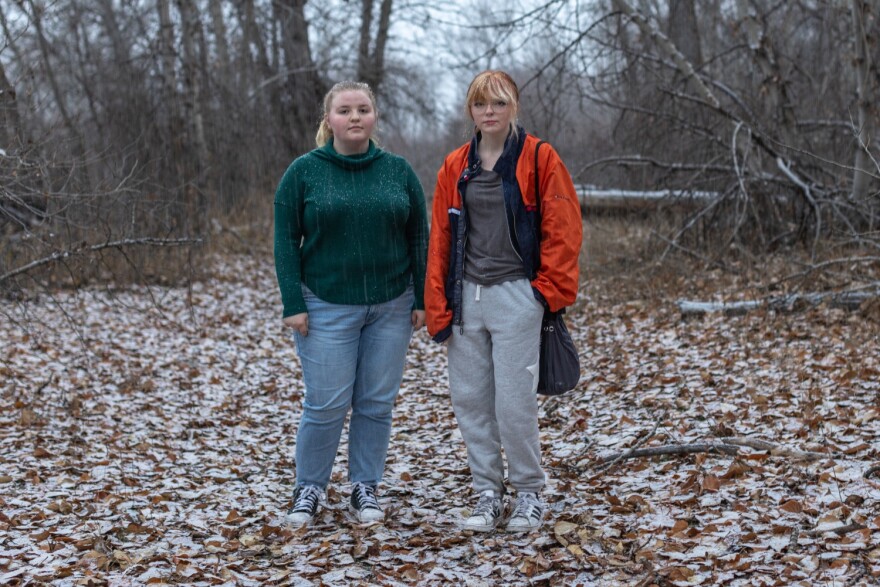
About 15 minutes later, as McCart killed time gazing at the clouded waters of the Okanogan River, her phone buzzed with a call from one of the cops. She nudged her grandma and cousin, and they migrated back to their parked car on the side of the road. Settled in their seats, McCart clicked her phone onto speaker.
The officer had news about Kit. He’d talked to Kit’s mom, Lorie Sue Nelson.
“She says that Kit has been missing since April,” McCart recalls the officer saying.
She froze. She’d speculated that Kit had been depressed, maybe suicidal — but missing? How could Kit be missing for five whole months, without any of their friends or other relatives knowing? Was there a missing persons report? Was anyone looking for them?
There was no missing persons report, she learned, because no one had reported it.
No one was looking for Kit.
Nelson told the police that Kit had run away, perhaps back to Yakima. As the officer relayed this information to McCart, she was confused by the officer’s matter-of-fact tone.
His calmness only escalated her own panic. For McCart, the call confirmed her fears: Kit was in danger. She called Kit’s relatives and told them the news.
It would be another three months before police began their investigation.
A national crisis
The Washington State Patrol lists Kit’s disappearance as April 2022, the month that Kit’s mom says they ran away. But the Omak Police Department acknowledges that date likely isn’t accurate. Most members of Kit’s family think they actually went missing several months earlier, in November 2021 — when Kit’s social media went dark and they stopped communicating with friends and family. Soon after, Kit’s school district took them off its rolls for not attending classes.
Kit, Mexican on their dad’s side and Indigenous on their mom’s side, with ancestral ties to the Penticton Indian Band in present-day British Columbia, is one of 58 missing children and 128 missing Indigenous people in Washington, which has among the most cases of any state in the country.
Kit’s disappearance is part of a much larger crisis, one that’s increasingly on the radar of state and federal officials. It has sparked bipartisan congressional legislation, executive orders from Presidents Donald Trump and Joe Biden, and state task forces promising to solve the problem. In Washington, state lawmakers created the nation’s first missing Indigenous persons alert system, which launched in July 2022, similar to Amber alerts for missing children. So far, it’s directly helped locate at least 13 people, according to the Washington State Patrol.
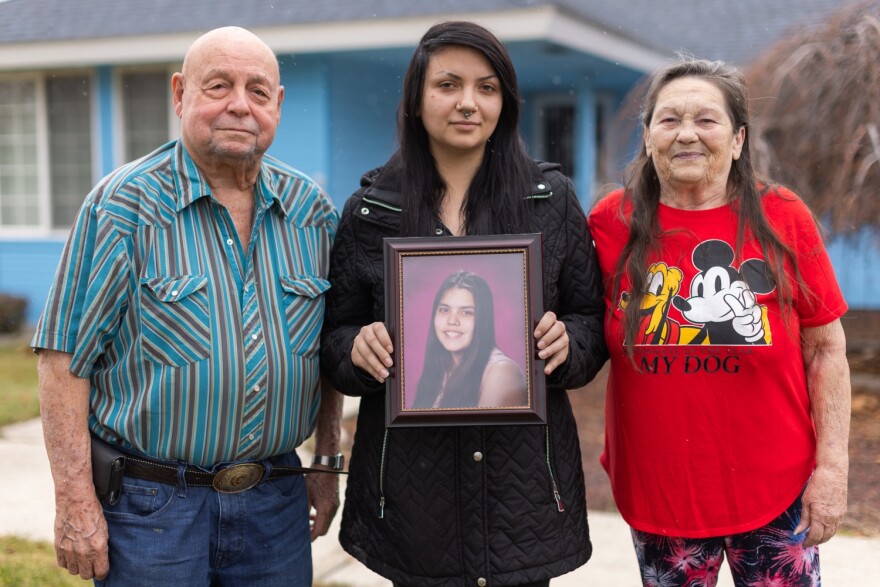
Yet despite the attention on the issue, kids like Kit still vanish. To family, friends and child advocates, Kit’s disappearance reveals a lack of urgency seeping into the public entities that are supposed to protect kids like them, a child born into an abusive home who’d just begun to find their identity before going missing.
Between December 2021 and September 2022, Washington Child Protective Services, local law enforcement and Kit’s school all received signs that Nelson’s home was potentially unsafe, records obtained by InvestigateWest show, but none of them checked in on Kit until months after they disappeared. InvestigateWest analyzed police reports and state records, as well as social media posts, text messages and interviews with Kit’s family and friends, to examine how Kit’s disappearance fell through the cracks for more than a year.
Omak School District dropped Kit from the school’s enrollment in early 2022 because they’d stopped going to class. Under state law, before withdrawing Kit, the district should have taken preventative steps such as scheduling conferences with Kit’s parents, referring Kit to a Community Engagement Board and filing a truancy petition with juvenile court. But the district did not refer Kit to a Community Engagement Board or file a truancy petition, according to the district. Omak School District declined to release records of Kit’s case, saying that because Kit would be 18 as of April 2023, they can’t legally do so without Kit’s permission.
CPS and the Omak Police Department were both warned of potential child neglect and violence in the home of Kit’s mother, the last place Kit was staying, long after anyone had heard from Kit, records show. Neither agency, however, followed up to ensure Kit was safe until that day in September 2022 when McCart took it upon herself to make sure Omak police checked on her friend. At that point, experts say police could have begun investigating Kit’s disappearance as a missing persons case. Instead, police further delayed their search for Kit by several more months by classifying them as a runaway.
The community needs to take responsibility in instances like Kit’s when a child is in a potentially dangerous situation, said Michelle Sandoval, co-director of the nonprofit Foundation for Youth Resiliency and Engagement, which serves youth across Okanogan County.
“It should be everybody,” Sandoval said. “It should have been law enforcement. It also should have been Child Protective Services at the initial stages. And it also should have been the school.”
At risk
Kit disappeared from a part of the country that’s become unusually accustomed to losing children like them.

Okanogan County, where Kit was living when they disappeared, accounts for nearly 8% of the state’s missing Indigenous people, 31 times as many per capita as King County, Washington’s most highly populated county. Yakima County, where Kit grew up, has the most missing Indigenous people of all counties, at 36, representing more than a quarter of the state’s total. Okanogan and Yakima counties are home to two of the largest Indian reservations in the Pacific Northwest.
As far as vulnerabilities go, Kit checked many boxes. They were born in 2005 into a household with a documented history of domestic violence, alcoholism and drug abuse. Their dad was in and out of jail. They briefly went into foster care before going to Yakima to live with their paternal great-grandparents, Bonnie and Charlie Groo, at age 4.
By the time the Groos gained custody in 2010, Kit’s mother, Nelson, had been reported to CPS 39 times, with investigators verifying three findings of neglect against her, records show. Two alleged instances of physical abuse were inconclusive. InvestigateWest’s efforts to reach Nelson by phone and email were unsuccessful. When InvestigateWest knocked on the door at an address under her name, nobody answered.
People exposed to domestic violence as children are at higher risk of becoming victims of abuse later in life, studies show. LGBTQ people are nearly four times more likely than non-LGBTQ people to be victims of violent crime, according to the first comprehensive, national study on queer experiences of violence, published in 2020.
But to friends and family, Kit was not a statistic. They were a kindhearted, anxious kid who would curl up in a soft armchair in the Groos’ carpeted living room and sketch anime characters. They’d sing while ambling about the house, sometimes to the annoyance of their family members, and would get lost in their favorite music — Elvis, Queen, Nirvana, Nicki Minaj, even some select country songs, their friends said.
Kit met McCart in kindergarten in Yakima. They became fast friends, and even dated on and off in middle school. They bonded over being raised by their older relatives, Kit by their great-grandparents and McCart by her grandma.
The Groos called them Ezzie, a nickname derived from their legal name, Esmerelda. But they never felt like Esmerelda fit them right, McCart said. In high school, they chose the name Kit. A nonbinary identity all their own.
Within the walls of Yakima’s East Valley High School, Kit was quiet in class and dressed in androgynous outfits — joggers and T-shirts with dinosaurs on them, and layers of sports bras to hide their breasts. They were a target for bullies. Kit told McCart they were asexual and aromantic, meaning they don’t experience sexual or romantic attraction. They came out only to their close friends.
When Kit was a sophomore in high school, Nelson reached out wanting to reconnect, the Groos said. McCart cautiously supported Kit’s desire to build a relationship with their mom. After all, Kit didn’t feel like they could fully be themselves in Omak, and Nelson said she respected Kit’s gender identity, McCart said. Plus, Nelson seemed to be in a better place, the Groos noted. Clean, stably housed, more mature — 36 years old and managing her own thrift store.
So after finishing their sophomore year in 2021, Kit packed their things and went to visit Nelson in Omak for a few weeks.
“To visit,” Bonnie emphasized. “It was always the plan for her to come back home.”
But weeks in Omak turned into months, and Nelson kept finding reasons for Kit to stay. Looking back, it’s now clear to Kit’s family what Kit’s role was in their mom’s house — a free babysitter for Nelson’s four youngest kids, all under 5 years old, they say.
“My mom cried to me yesterday being all like ‘we care about you, what if your sisters will need you? What if you’ll need to be their parent.’ And how she ‘wouldn’t let me go without a fight now that she has me,’” Kit messaged a friend over Instagram in summer 2021.
By the end of the summer, Nelson, who still had parental rights over Kit, enrolled them in Omak High School.
At first, Kit seemed happy to go to school, said Maliyah Nelson, Kit’s older half-sister by three years who regularly talked to Kit on the phone from Spokane that summer. “It was just a break from the kids and a break from Lorie,” she said.
But soon, Maliyah said she noticed a change. Nelson, who initially seemed accepting of Kit’s gender identity, texted Maliyah photos of Kit wearing long, flowery dresses with puffed sleeves and pigtails. And Kit had gotten bangs. Not the cascading, face-framing layers that Kit had had before, but a blunt line of hair that cut straight across their forehead, identical to the hairstyle of their younger half-sisters.
“It just wasn’t in character,” Maliyah said.
Kit spoke out to friends about not feeling accepted. “That moment when the few good things you had to say about your mom is no longer there,” Kit posted on Twitter in August 2021. “She says she accepts me, that my ‘family’ here ‘accepts me’, but her actions say otherwise.”
Over the next few months, Kit’s calls with Maliyah dropped off as Kit became overwhelmed taking care of their younger siblings, Maliyah said.
In early November 2021, McCart was scrolling through her phone from bed when the screen lit up with three new messages from Kit.
“We will be adults soon,” Kit wrote.
“Where did the time go?”
“I swear middle school felt not too long ago”
They were the last messages Kit would ever send her.
Missed opportunities
The low-income apartment where Kit lived with their mom just before their disappearance lies on the east side of the Okanogan River, which marks the boundary of the Colville Reservation. It divides Omak not only geographically, but also along racial and socioeconomic lines, community members say.
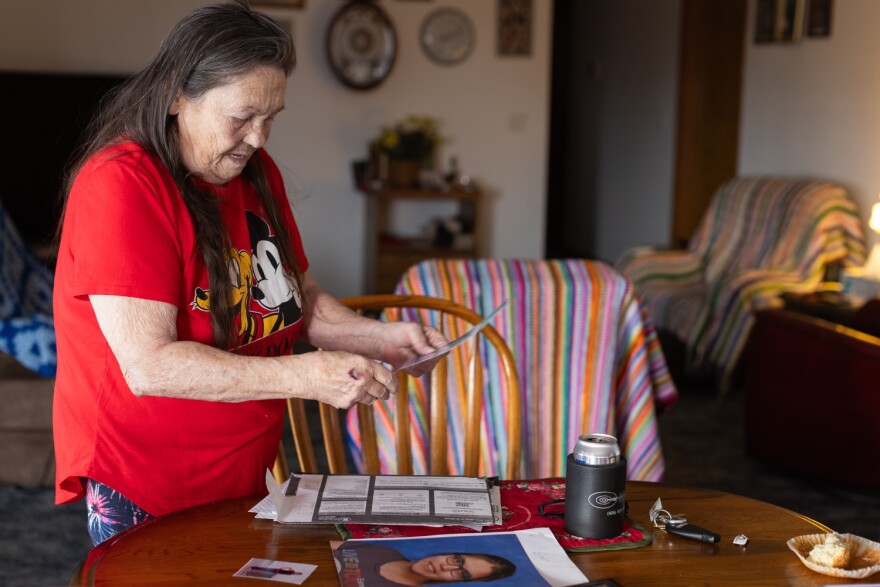
“You have Westside Omak, which is across the bridge, which is the white people side,” said Angela Morgan, Nelson’s former neighbor. “And then you got the Rez. You got Eastside. You got ‘Don’t leave your bike outside or it’s gonna get jacked.’”
This divide dates back to the 1870s when the federal government forced the Colville Tribes off their traditional homeland and ordered a dozen distinct bands and tribes to live within the reservation’s borders. Today, an estimated 24% of people on the Colville Reservation live below the poverty level, versus 10% of people statewide, according to the U.S. Census Bureau.
The disparities are larger than Colville. Federal commissions and state task forces examining the Missing and Murdered Indigenous People crisis have found that ongoing federal funding shortfalls and legacies of colonization contribute to higher rates of poverty, housing instability and involvement in the child welfare system among Indigenous people. Without safe, stable places to stay, Indigenous people are more vulnerable to exploitation and violence, reports show.
Studies find that it’s critical to begin searching for missing people as early as possible. The first 48 to 72 hours after a person goes missing are the most crucial — about 70 percent of all reported missing persons are found or voluntarily return within that time, according to the FBI. But Kit’s disappearance rang no alarm bells at first. Warning signs that Kit could be in danger were overlooked or dismissed by law enforcement, CPS and Kit’s school district, records show.
In late November 2021, Charlotte Groo — Bonnie and Charlie Groo’s adopted daughter who grew up as an older sister to Kit — was struck by a sudden certainty that Kit wasn’t OK. About three weeks after Kit stopped replying to friends’ messages, Charlotte called the Omak Police Department and asked them to check on her 16-year-old sibling.
“I had this gut feeling. I don’t even know how to explain it. I just felt like something was wrong,” said Charlotte, 24.
An Omak police officer responded to Charlotte’s call. According to the six-sentence police report, an officer went to Nelson’s apartment. Kit “came to the door and advised that she (was) fine and that she was safe. I cleared with no report,” the officer wrote.
But Charlotte is skeptical that it was really Kit who came to the door that day. The report didn’t detail how — or if — Kit’s identity was confirmed. The detective currently investigating Kit’s disappearance told InvestigateWest that the person was identified as Kit, but he didn’t know how Kit’s identity was verified. Charlotte knows Nelson has other daughters and might have had guests in the apartment. “That could’ve been any one of the girls that were in that house,” she said.
It wasn’t Nelson’s first interaction with the Omak police. They were at her apartment just five days before for a domestic dispute, after neighbors reported that people were screaming inside Nelson’s unit. And officers would be back the very next night, on Nov. 29, 2021, to arrest Nelson’s boyfriend for allegedly striking her with a baby gate. Neither police report mentions Kit.
As fall turned to winter, Kit stopped going to school. The Omak School District withdrew Kit for truancy in January 2022, after 33 days of unexcused absences since the beginning of the school year.
“I didn’t know she wasn’t going to school or anything. Because I would’ve raised hell,” Charlie said. “I would’ve got her and brought her back home.”
A few months later, in June 2022, CPS arrived at Nelson’s door. A neighbor had reported concerns that her kids weren’t being cared for.
Nelson let the child welfare workers inside, according to a dependency petition filed against Nelson by the Washington State Department of Children, Youth, and Families after the incident. They found Kit’s four younger siblings in an upstairs bedroom with tangled hair, caked in dirt, sitting in soiled diapers. Their bodies were covered in bruises, burns and bite marks that appeared to be from “an adult human,” according to the petition.
“The family situation results in no adult in the home performing parenting duties and responsibilities that assure child’s safety,” the petition says.
The kids were taken into protective custody and sent to the hospital. They were later returned to Nelson’s care, according to the Omak Police Department.
As far as the Groos knew, Kit should’ve been in that apartment along with their younger siblings. But according to the state’s petition, only the four youngest kids were in Nelson’s care at the time. Kit’s name isn’t mentioned in the document.
CPS wasn’t the only agency to witness the dangerous state of Nelson’s children that June day in 2022. An Omak police officer was there, too. After speaking to Nelson and CPS workers, the officer learned that Nelson’s kids appeared to have been choked, bitten, burned, hit with belts and possibly sexually assaulted, the police report says. No charges were filed against Nelson.
Omak police were aware that Nelson had another child who lived in that apartment — they’d checked on Kit seven months before, at Charlotte’s insistence. But they didn’t ask about Kit, the report shows.
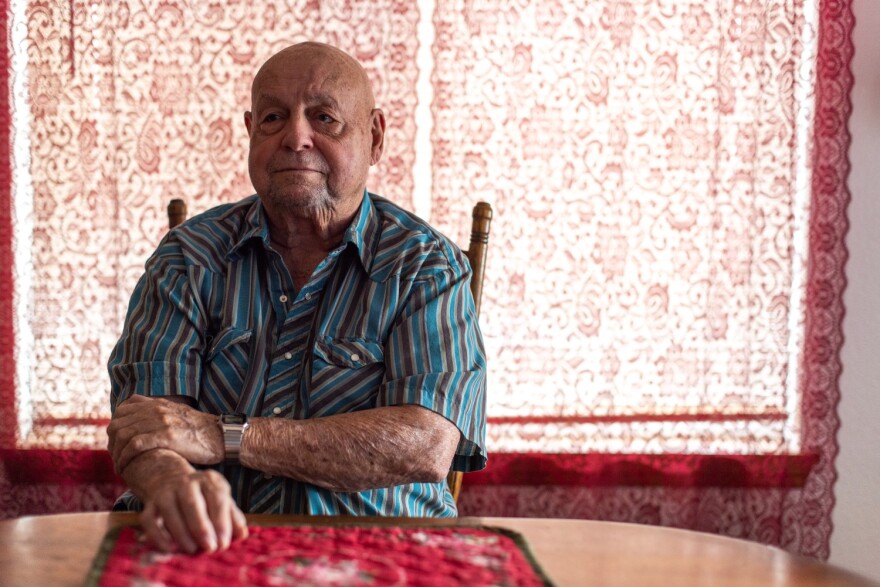
Labeled a runaway
It was three months later, in late September 2022, when McCart drove to Omak looking for Kit with her grandma and cousin. She told the police she was scared for her friend, and an Omak police officer once again knocked on Nelson’s door.
“I located Esmerelda’s mother, Lorie Nelson who stated that Esmerelda had moved out of her house in April of 2022 and that she had no contact with her,” the police report says, using Kit’s legal name. “Lorie stated that she thought that Esmerelda moved back to Yakima. I relayed this information to Amythist. I cleared the call.”
McCart and the Groos thought immediately that this story didn’t add up. They’ve always known Kit to be kind, loving and extraordinarily anxious. They agree that Kit wouldn’t have fled their mom’s place without at least telling someone first. And Kit definitely wouldn’t have left the rest of their friends and family to worry themselves sick over where they’d gone, McCart and the Groos say.
“Everybody that would know Kit would know she would never, ever run away,” said Bonnie, who typically still uses she/her pronouns for Kit.
About two weeks after McCart’s visit, Nelson moved out. She took her four young kids to the Wenatchee area, records show. She also deleted her social media accounts and blocked Kit’s family members on all messaging apps, they say.
Still, although the Washington State Patrol activated a Missing Indigenous Person Alert for Kit in early October 2022 at the Omak Police Department’s request, the Omak police treated Kit as a runaway case. Because of that, the department didn’t begin investigating Kit’s disappearance.
“A runaway juvenile is not a crime,” said Brien Bowling, the Omak Police Department detective investigating Kit’s case.
In contrast to a missing persons case, which is investigated by the department, a runaway is “a parenting issue,” Bowling explained — ultimately, an officer can’t force runaways to go home. Because Kit had been reported to the department as a runaway, not a missing person, no detective was initially assigned to the case, he said.
A few days after Kit was reported as a runaway, Charlotte created a “Finding Kit” Facebook page. She organized vigils, made missing person posters and messaged anyone she could think of with a connection to Kit or Nelson. Every piece of information she gathered went on the Facebook page, which now has nearly 4,000 followers.
Finally, after months of Kit’s family and friends begging the community to help them find Kit, the Omak Police Department began a missing person investigation for Kit in January 2023, according to Bowling. It was due to the large time lapse in which no one had contact with Kit, Bowling said. Charlotte believes it had more to do with public pressure.
Bowling, the only detective in the town of about 5,000 people, said limited manpower is his biggest challenge in any criminal investigation. Some weeks, he might dedicate nearly all his time to Kit’s case. Other weeks, it might only be 10 minutes, he said.
His leads have so far come up empty. Residents told him about dried “blood” staining a mattress that Nelson left behind in Omak. He had the reddish-brown substance tested in a lab. It wasn’t blood, the test confirmed, though he’s not sure what it actually is. He sent cadaver dogs to properties where people thought Kit’s body was buried. They found nothing.
“We don’t have any evidence,” he said.
‘No sense of urgency’
Experts say Kit’s case reflects larger issues of law enforcement stereotyping missing Indigenous kids as runaways and criminal jurisdiction confusion within Indian Country. They say agencies should place higher priority on suspected runaway cases and better communicate with one another to ensure no cases are overlooked.
“Missing children of color are disproportionately labeled as runaways, which creates issues in investigating their cases,” said Sheena Gilbert, a University of Nebraska Omaha Ph.D. candidate whose published research focuses on Indigenous crime and victimization.
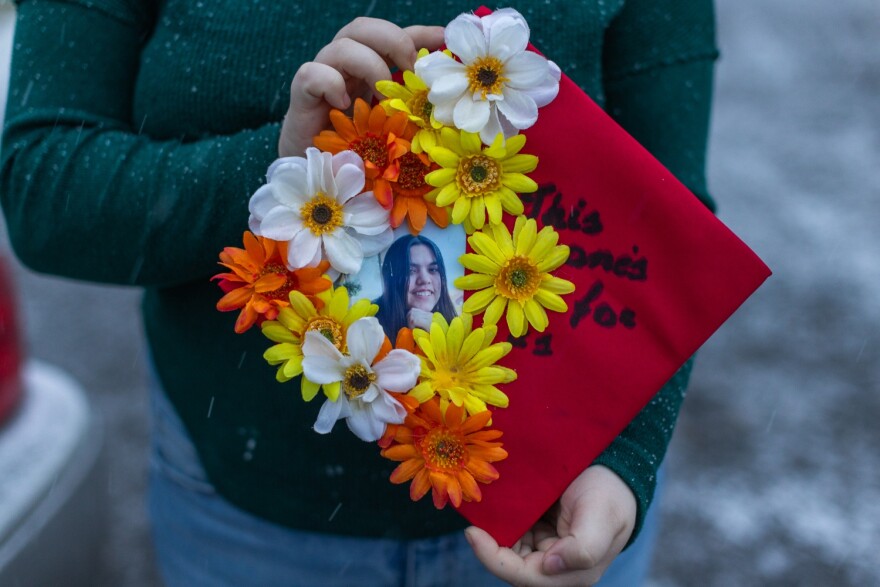
Her research finds that in cases of missing Indigenous and Black girls, law enforcement often has “no sense of urgency to look for them” because the “runaway” label insinuates that the child will return, has left on their own and is not in danger, she said.
Gilbert, a citizen of the Stockbridge-Munsee Tribe, argues that children should not be classified as runaways until they’re found or returned home.
“We can speculate based on events leading up to their disappearance, but unless someone explicitly says, ‘I’m running away,’ how can we categorize or label them as a runaway?”
Without law enforcement stepping up to investigate, it was up to Kit’s family and friends to lead the initial search. But it wasn’t immediately apparent to Omak residents where to go with tips. Missing person flyers posted online and around town had varying instructions on which law enforcement agency to call. Some said the Okanogan County Sheriff’s Office, others said the Omak Police Department, or the Colville Tribal Police, or the Washington State Patrol.
Overlap between federal, state, local and tribal law enforcement jurisdictions is a major barrier in addressing the Missing and Murdered Indigenous People crisis, often causing confusion over the responsibility for investigations, according to a 2022 report from the Congressional Research Service, a federal agency that provides policy and legal analysis for Congress. The Omak Police Department, which has jurisdiction over Kit’s case, is working with the Colville Tribal Police and FBI on the case, Bowling noted.
“This is a very common jurisdictional problem that comes up in Indian Country,” said Jessica Pouley, a child advocate attorney who is a direct descendent from the Colville Confederated Tribes and the Arrow Lakes-Sinixt Band of Indians. “A lot of people can look around and think, ‘Oh, it’s not my responsibility.’ And then ultimately, it can happen that nobody picks it up.”
Immortal
Two years after she last heard from Kit, in November 2023, McCart sets out in search of a fallen tree. She’s all but given up hope of finding Kit alive. Now, she’s wandering the trails by her grandma’s house in Yakima, looking for the tree that she and Kit used to pretend was their home. They nicknamed it the “bum house” and carved their initials into its soft bark, memorializing their friendship forever. It was a sanctuary they shared, uncorrupted by the pain of growing up.
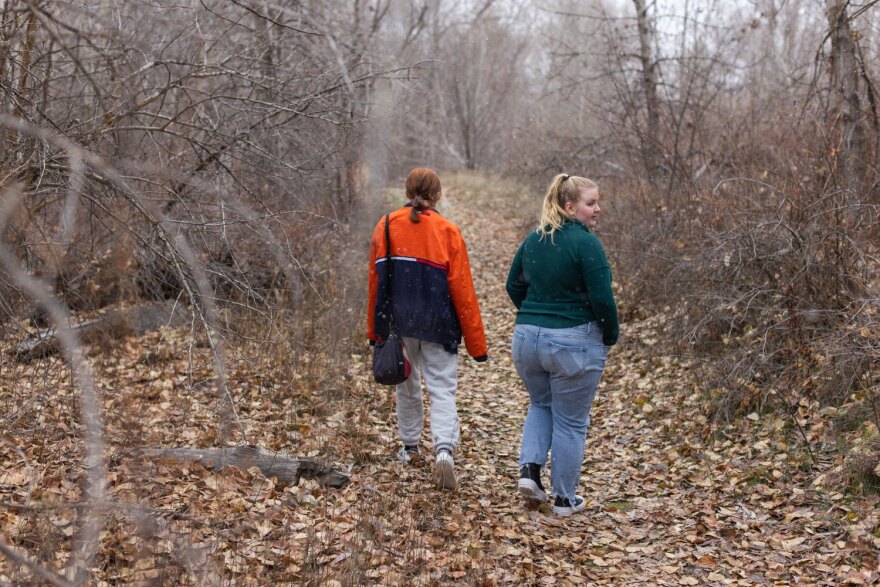
The tree is somewhere deep within the woods. McCart just doesn’t remember exactly where. But its dramatically exposed roots are unmistakable, she said. She’d know it when she sees it.
Years before, she and Kit wandered these trails all the time, back when the lush grass was dotted with wildflowers and gold-colored leaves. Her grandma would tell them to be careful. It wasn’t safe out there for two little kids walking alone, she would say. McCart thought her grandma was being foolish. The trails were their wonderland.
At the trails’ entrance, there’s a ring of rocks around the base of a tree — a roadside shrine marking a car accident that McCart and Kit witnessed when they were kids. After seeing the crash, McCart remembers running back to her grandma’s house and hugging Kit in the front yard. As they held each other, Kit suddenly burst into song. “My Immortal” by Evanescence.
When you cried, I’d wipe away all of your tears
When you’d scream, I’d fight away all of your fears
It was a jarring moment, but McCart still smiles at the memory. That was Kit. At McCart’s side whenever she needed them.
Kit would be an adult now. Born just two days apart, McCart celebrated their 18th birthdays in April 2023 with a cake for both of them. When McCart graduated in June from the East Valley School District, where Kit had attended kindergarten through sophomore year of high school, she decorated her graduation cap with fake flowers surrounding a smiling photo of Kit. Kit’s name wasn’t mentioned at the ceremony, but McCart walked tall for both of them.
Now, as she winds her way through the Yakima trails in November 2023, a soft snow begins to fall. Wispy flurries cling to her emerald green sweater, a splash of color in the otherwise bleak landscape. She pauses and shakes her head at the creaking tree branches and dry, yellow grass surrounding her. She’s taken a wrong turn.
The once familiar trails are foreign to her. The woods are less alive somehow, the wildflowers and golden leaves of her memories displaced by pipes and needles scattered in the dirt. She hears stories about people, possibly predators, lurking around here. She hears stories about people disappearing. It’s hard to know what’s true.
Finally, she reaches a clearing. Up ahead is the fallen tree from her childhood.
“It’s here!” she shouts. “This is it.”
But it’s all wrong. The old cottonwood tree’s been scorched by a fire. The exposed roots are incinerated, now just splinters of charred wood. She scans the blackened trunk for any hints of the past, but it’s no use. Kit’s and McCart’s initials are gone.
It’s all she needs to see. She turns back to the path, knowing she probably won’t return for a long time. Her grandma was right after all. She doesn’t feel safe here anymore.
InvestigateWest (invw.org) is an independent news nonprofit dedicated to investigative journalism in the Pacific Northwest. Visit invw.org/newsletters to sign up for weekly updates.






